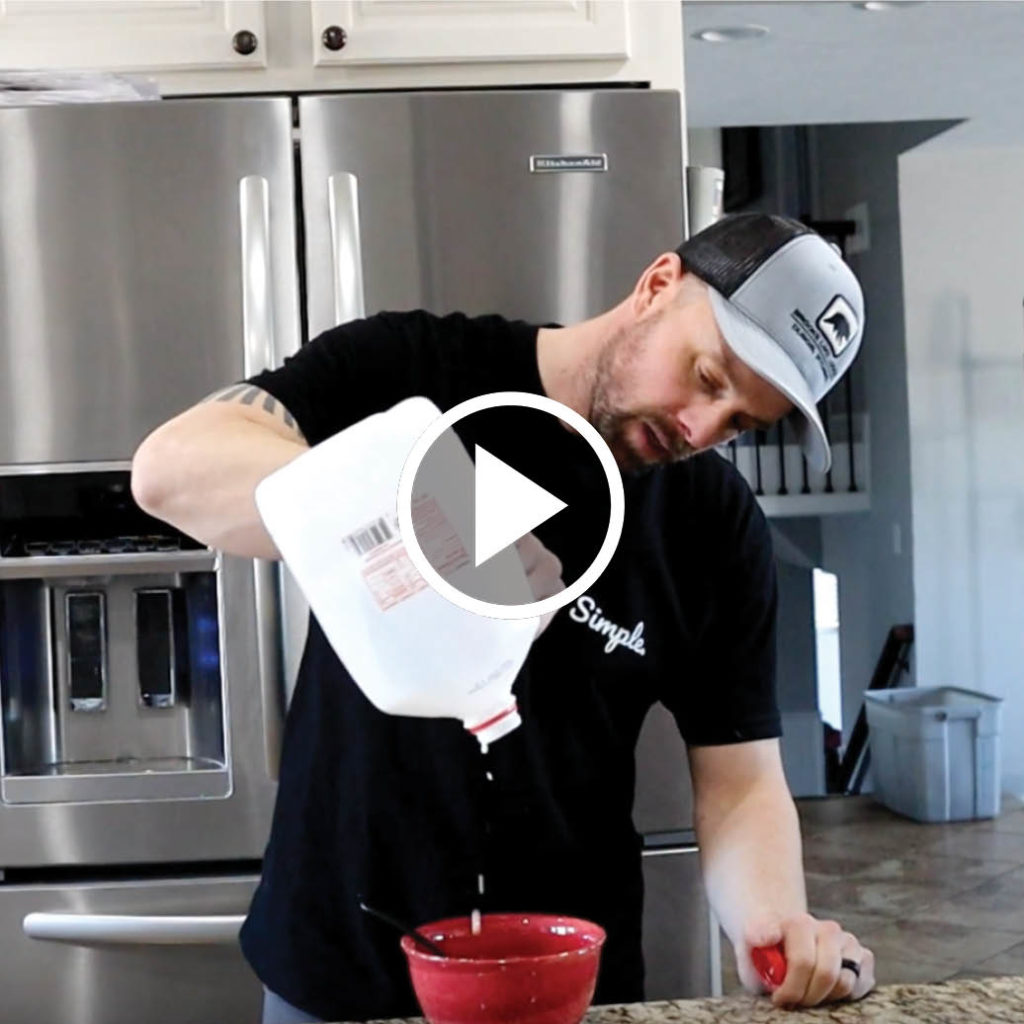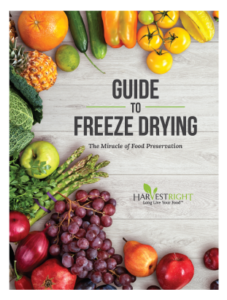Milk has long been seen as a healthy drink, because it is high in a range of nutrients. Milk is good for bones because if offers a rich source of calcium, a mineral essential for healthy bones and teeth. Milk is also fortified with vitamin D, which also benefits bone health and, along with calcium, can help prevent osteoporosis. The U.S. Department of Agriculture (USDA) guidelines for 2015 to 2020 suggest that Americans should consume “fat-free or low-fat dairy, including milk, yogurt, cheese, and/or fortified soy beverages.”
Milk, and other dairy foods, are an essential food item in any good emergency food storage. Milk is easy to freeze dry and, once powdered, takes up little space and is extremely lightweight. An entire gallon can fit into a quart jar. It is also simple to reconstitute. Simply add a 1 to 1 ratio of powder to water. But does it taste the same? Find out what “Retired at 40” discovered while freeze drying milk. Pick up some very useful tips when it comes to freeze drying dairy and watch to the very end to see why he thinks milk is one of the very best foods to freeze dry.

You can also watch a video he did on freeze drying cheese, yogurt, and other dairy products.





If one gallon of mike stores in a one quart container, how does it reconstitute at a one to one ratio?
I was wondering about the math on this one too.
I guess that would work out if you use 1% milk. Freeze dry a gallon of 1%, then reconstitute 1 to 1 and you should have half a gallon of 2%, right?
I was wondering the same thing, lol
The volume of the water is what makes up the difference.
Here is what this guy says, do it by weight.
https://youtu.be/LI8YkHtZVE0 He posted the weight of whole milk wrong according to the USDA pdf below.
This link gives you the weight of different milk in different units of weights and volumes on page 32
https://www.ers.usda.gov/webdocs/publications/41880/33132_ah697_002.pdf
I always do 1 gallon at a time. Put each in a QT jar. When reconstituting, just fill to the QT line. Stir or shake.
Your post doesn’t make sense
What about soy milk? What’s the ratio for rehydrating?
Can I freeze dry raw milk or must it be pasteurized?
I would also like to know if you can freeze dry raw milk
Short answer is yes. This is a precarious one to answer because there’s no scientific research on the food safety of freeze dried unpasteurized milk. Despite that, Pathogenic Bacteria won’t survive in dry environments. When you freeze dry raw milk, I imagine you get the best of both worlds.
You can freeze dry raw milk but be sure to skim off the cream first. The fats left will still be separated when reconstituted but you can homogenize it.
We freeze dried our raw goats milk and are doing cows milk tomorrow. Turned out wonderful! We use it as coffee creamer and my husband uses it in our goats milk soap.
How did the raw cow’s milk work? Did you skim the cream off or mix it well before pouring?
Yes, excellent taste
If you place dehydrated milk in a blender to make the milk into a powder, would the reconstitution be the same.? It might eliminate some of the clumps when reconstituting.
Can I freeze dry powder milk? In order to get the shelf life out of it.
I did a test with my freeze dryer and this is what I found out. A one quart mason jar full of milk freeze dries down to 3.9 ounces. Now remember that a quart mason jar is not a full quart. In my large freeze dryer I have process 2 gallons of milk at a time.
The OP says 1:1 by volume (1 Tbl) but I think you may be able to do it on a 1:1 ratio based on weight. 1tbl of freeze dried milk and 1 tbl of H2O is tedious. I am going to try it and see. 6 tbl of milk will = X grams of weight, 6 tbl of water will weigh X grams and see. Another way to look at it is that we know milk fats are about 3% by volume, so that could be worked out too.
I have freeze dried 2 gallons of milk twice in my large freeze dryer. I have not seen it’s ability to fit a gallon of freeze dried milk into a quart. A gallon of freeze dried powdered milk fits into a 1/2 gallon Ball jar or into 2 quart jars . It does reconstitute well but for the life of me I don’t see how it would fit into anything smaller as it’s powdered and doesn’t get any smaller.
Freeze drying whole milk sounds very interesting to me…. any idea on the shelf life? My “kelvin” room is ready to go; just waiting for my Harvest Right Freeze Dryer to arrive.
Thank you for the hints does the canning jar still need a sensor and a pressurized seal? Thank you I’m new at this
Would buttermilk be able to be freeze dried, or is the fat content too high?
I was wondering the same thing. I have table cream in the Fd right now because when I read you can Fd icecream sandwiches then I’m hoping it will make sense that you can also Fd high fat dairy. Fingers crossed.
yes
I’ve read it’s 3.5 oz. Milk powder to 1 qt water
Why do I have to watch a video? Can’t you just tell us how to do it.
I freeze dry one gallon of milk at a time. After processing with a blender, I use a kitchen scale to divide the powder into two mylar bags. Each bag should be equivalent of .5 gallon milk.
When adding water to whole milk, is it still considered whole milk or 2% milk?
Not sure the instructions make any sense here.
How I store:
1qt/32oz per tray
Store 1 tray per bag or jar
How I reconstitute:
Pour powder into 1qt/32oz container
Fill container halfway with water
Stir to dissolve
Once fully dissolved, fill to 1qt/32oz mark
I want to use freeze dried whole milk this to creme my coffee without refrigeration ….. so a little at a time. The question is ….1 Tbsp of powder to 1 Tbsp of water ?
How long does freeze dried raw milk last? I have a batch running right now and will store it in Mylar bags with oxygen absorbers…. Some people say 20-25 years but I’m curious if the cream makes it not last as long. Can you define “short term storage” as well please?
Can you freeze dry Oat Milk? If so, anything special or different from freeze drying milk we need to know?